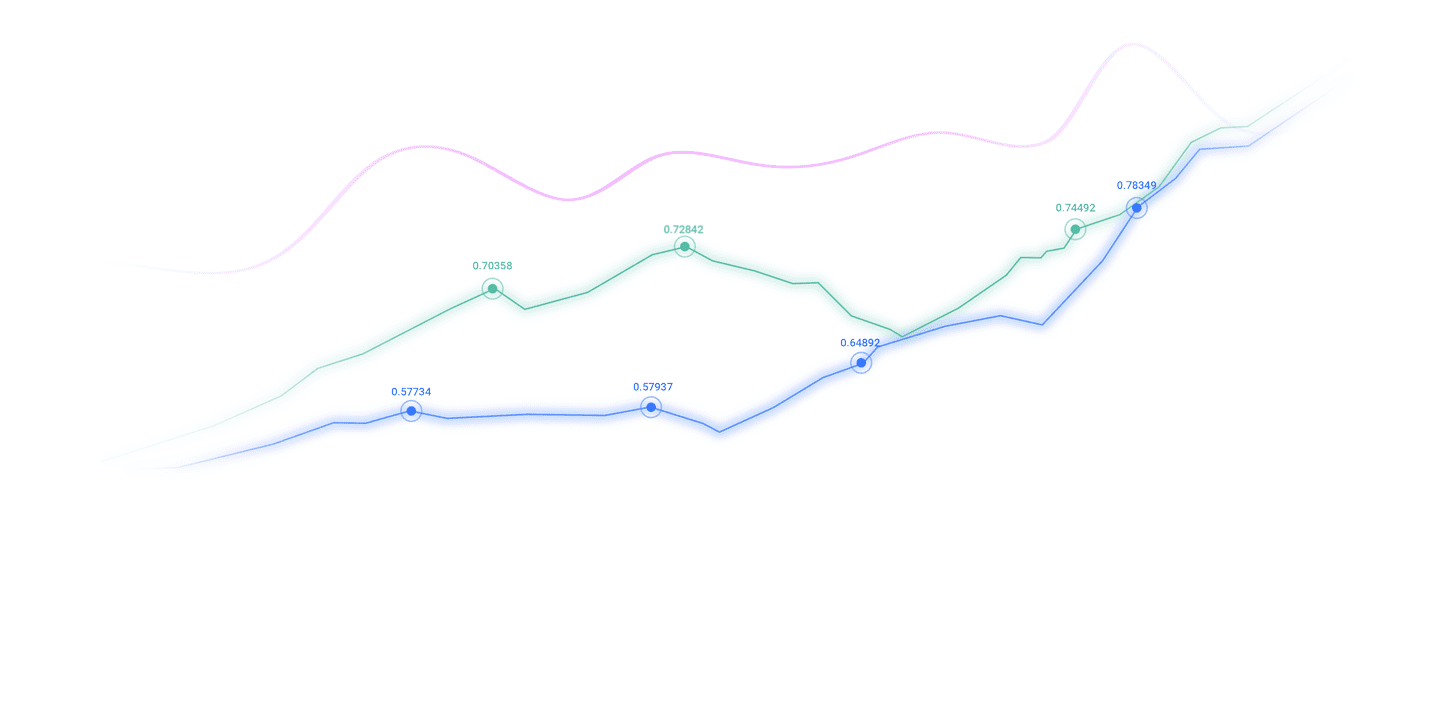Trusted by over 15 Million Traders
The Most Awarded Broker
for a Reason
CATEGORIES
News
- Practical foreign exchange strategy on August 14
- The United States' big non-farm market is coming in July, and market expectation
- The Fed is about to make a speech, is the next jump of the euro/dollar to go up
- Practical foreign exchange strategy on July 23
- The oscillates upward, and the 3340 is low!
market analysis
Japanese silver is slow and the Federal Reserve is down. Who is holding the reins of the US dollar/yen?
Wonderful Introduction:
If the sea loses the rolling waves, it will lose its majesty; if the desert loses the dancing of flying sand, it will lose its magnificence; if life loses its real journey, it will lose its meaning.
Hello everyone, today XM Foreign Exchange will bring you "[XM Foreign Exchange Market Review]: Japanese silver is slow and the Federal Reserve is down, who is holding the reins of the US dollar/JPY?". Hope it will be helpful to you! The original content is as follows:
On Wednesday (September 10), the US dollar and the yen continued to consolidate sideways in the early trading, and repeatedly tug-of-war above 147. Fundamental news intertwined: on the one hand, domestic political uncertainty suppresses the Bank of Japan's (BoJ)'s willingness to accelerate tightening in the short term; on the other hand, the market still bets that BoJ will continue to advance normalization this year, and the Federal Reserve (Fed) is likely to restart the interest rate cut cycle next week, limiting the upward space of the US dollar.
Brands:
In Japan, the news that Prime Minister Shigeru Ishiba announced his resignation stems from the rebalancing of power by the Liberal Democrats after the defeat of the Senate election in July. This sudden factor may make BoJ more cautious in the short term, and the normalization rhythm is "steady first and then progress", but it does not rewrite the expectation of interest rate hikes this year - the current market generally believes that BoJ will still raise interest rates again before the end of the year. In terms of macro data, Reuters' short-term manufacturing economy showed that the manufacturing industry's prosperity rose to more than three-year highs; earlier this week, Japan's real GDP in the second quarter was revised up to 2.2% annualized annualized. Coupled with the recently announced rebound in household spending and the positive real wages reappeared after seven months, the xmaccount.combination of "moderate recovery + moderate inflation" is expected to continue, retaining a macro basis for BoJ to raise interest rates this year.
In terms of the external environment, the equity market sentiment is relatively warm. Overnight, the three major Wall Street indexes hit a new closing high, driving the Asian risk appetite to continue to rise, and the safe-haven yen was suppressed. At the same time, the US dollar received some repairs on the eve of the past, but its continuity was limited. The reason is: last Friday, the U.S. non-farm employment data weakened, the labor market showed signs of cooling down, and the market's bet on the Fed's more radical easing has heated up - the 25 basis point interest rate cut at the FOMC meeting next week was "almost a foregone conclusion", and there is even a small probability of "exceeding amplitude". This is withThe gradual tightening of BoJ has formed a distinction, and the structural spread is conducive to the stabilization of the yen in the medium term.
In the short term, the market will remain waiting and see before the US PPI that will be announced in the North American period; then Thursday's US CPI will become a key trigger for the fluctuations in the US dollar and US debt this week. If the inflation chain continues to cool down, the marginal negatives of the US dollar at the data level may appear again, thereby limiting the upward space of the US dollar/JPY; on the contrary, if the inflation stickiness exceeds expectations, it may trigger a technical correction of the expectation of "rapid interest rate cuts".
Technical aspect:
The current chart is a 240-minute K-line. The Bollinger band shows that the middle rail is 147.702, the upper rail is 148.777, and the lower rail is 146.627, and the Bollinger bandwidth is at a medium level. The latest exchange rate is 147.446. The backtesting area running below the middle track and close to the middle track is still deduced. In terms of key near-end prices, the high in early September was 149.134, while the nearby low was 146.303. There was also a stage low of 146.659 earlier, forming a dense support belt of 146.30-146.70.
In terms of indicators, the DIFF of MACD is -0.168, DEA is -0.166, and the cylinder is only -0.003, indicating that the kinetic energy of the short side is significantly attenuated and the double lines are "bonded" below the zero axis. If an upward signal appears in the subsequent direction, it is easy to trigger a technical rebound; if it falls back again, it constitutes a continuation of a weak downward exploration. The relative strength index RSI (14) is 48.018, pointing to a "weak neutral" state, and no clear overbought/oversold signal has been formed. xmaccount.combined with the K-line pattern, the 147.70 line (Ballinger's middle rail) is a short-term long-short watershed; if it effectively stands firm and expands the Bollinger band in large quantities, the potential upward measurement is 148.78 (Ballinger's upper rail) and 149.13 (stage peak). If the decline falls below the buffer zone of 147.00-146.80, the market will retest the dual support of 146.66/146.30.
Prevention of market sentiment:
The main theme of recent sentiment is "hedge-style optimism". Currently, "interest rate cut transactions" are still the main line; at the same time, the bet on BoJ to increase interest rates once again this year has caused the net exposure of arbitrage transactions to shrink in the yen assets.
On the market, the implicit volatility of options did not soar extreme, indicating that the market has limited concerns about short-term sudden outbreaks and prefers to use seller strategies to capture range returns; but with the imminent PPI and CPI, the sentiment is also "waiting and watching", and the transaction tends to shrink, and the volume-price relationship is in line with the template of "energy shrink before data - direction amplification after data".
In terms of leveraged funds, if the US dollar data weakens again, the sentiment of the bear market may take the opportunity to amplify the narrative of "the US/Japan interest rate spread converges"; on the contrary, if inflation stickiness and salary stickiness rise again, the short-term "reverse squeeze" will target the longs in the yen, and the sentiment volatility will rise.
The above content is about "[XM Foreign Exchange Market Review]: Japanese and silver slow down and Federal Reserve declines, who is pullingLive the reins of the US dollar/yen? "The entire content of " was carefully xmaccount.compiled and edited by the editor of XM Forex. I hope it will be helpful to your transactions! Thank you for your support!
Spring, summer, autumn and winter, every season is a beautiful scenery, and it stays in my heart forever. I've slipped away~~~
Disclaimers: XM Group only provides execution services and access permissions for online trading platforms, and allows individuals to view and/or use the website or the content provided on the website, but has no intention of making any changes or extensions, nor will it change or extend its services and access permissions. All access and usage permissions will be subject to the following terms and conditions: (i) Terms and conditions; (ii) Risk warning; And (iii) a complete disclaimer. Please note that all information provided on the website is for general informational purposes only. In addition, the content of all XM online trading platforms does not constitute, and cannot be used for any unauthorized financial market trading invitations and/or invitations. Financial market transactions pose significant risks to your investment capital.
All materials published on online trading platforms are only intended for educational/informational purposes and do not include or should be considered for financial, investment tax, or trading related consulting and advice, or transaction price records, or any financial product or non invitation related trading offers or invitations.
All content provided by XM and third-party suppliers on this website, including opinions, news, research, analysis, prices, other information, and third-party website links, remains unchanged and is provided as general market commentary rather than investment advice. All materials published on online trading platforms are only for educational/informational purposes and do not include or should be considered as applicable to financial, investment tax, or trading related advice and recommendations, or transaction price records, or any financial product or non invitation related financial offers or invitations. Please ensure that you have read and fully understood the information on XM's non independent investment research tips and risk warnings. For more details, please click here


































































































